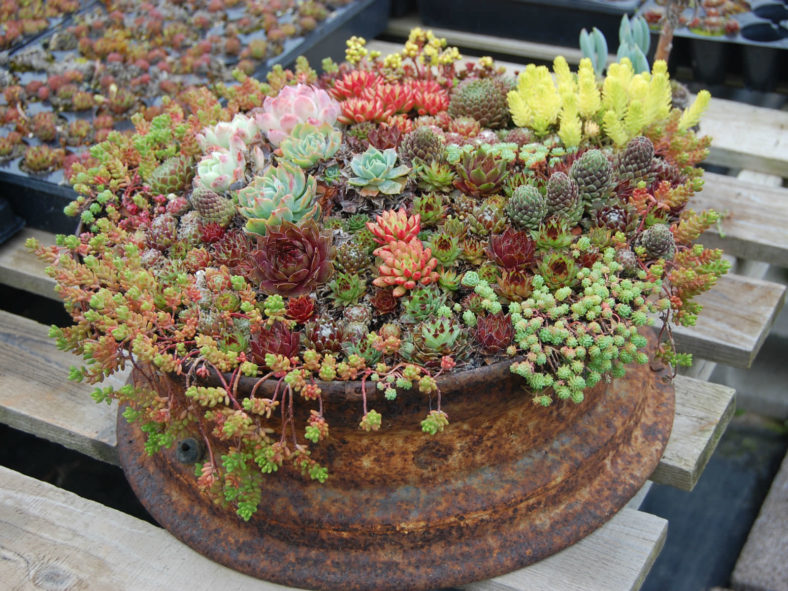Succulents thrive in the simplest of containers, and their distinctive shapes and colors provide endless opportunities for creativity.
Go with Compatible Plants
They either grow in the cold or warm seasons. Some grow in the fall until spring when they go dormant. Warm-season plants go dormant in the fall.
Choose the Right Container
Plants with shallow roots or that tend to rot faster do best in low or unglazed containers. Plants with leggy roots or require more water thrive in deep containers made of glazed, ceramic, fiberglass, or plaster. You can put succulents in wood frames and boxes, logs and metal vessels, glass cylinders, and handmade pottery.
Soil Aeration and Drainage
You can buy any potting mix designed expressly for succulent container gardening or easily make your own soil mix. Ordinary potting soil is usually too fluffy and not gritty enough for a succulent container. Instead, blend equal parts potting soil, coarse sand, and perlite or pumice for an ideal mix.

Top Covering is not Just for Looks
Finishing the surface with rocks can help control weeds and moisture and regulate soil temperature. Lining the inside of the pot with bubble wrap helps insulate the plant from excessive heat, which can cause root dieback.
A Break from Mid-Day Sun
In nature, succulents often escape the elements by hiding in the shade of larger plants or rock crevices. So, offer your succulent afternoon shade.
Watering Schedule will Vary
Water only during the growing season. Let the surface dry out a little bit before you water again. Conversely, you do not want it to get bone dry because you will stress the plant. When a plant is water-stressed, it will be dull-looking, soft, and malleable. When it is well-watered, it will be plump, shiny, and firm.
Source: dailynews.com
Links
- Succupedia: Browse succulents by Scientific Name, Common Name, Genus, Family, USDA Hardiness Zone, Origin, or cacti by Genus